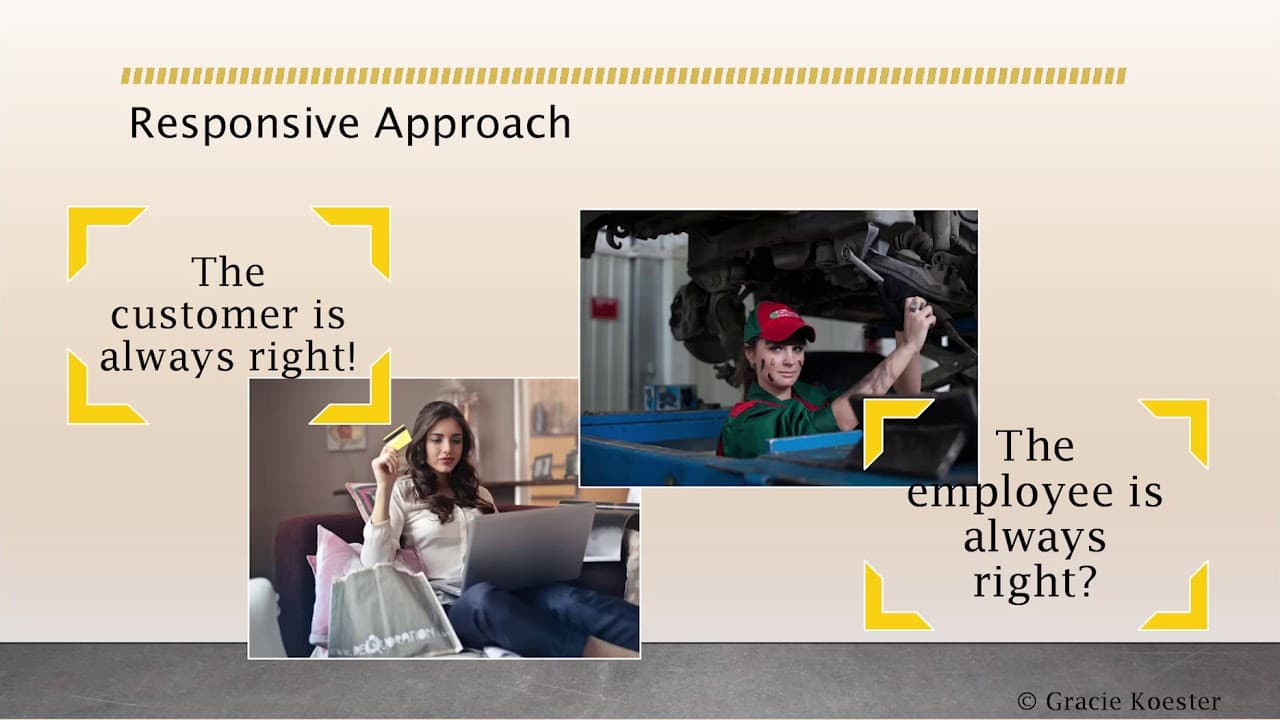Well, I just have to say I'm so excited to be here—in progress, in a beautiful, incredible city, and also because of what I've heard so far in this conference. I'm thrilled to be here and to contribute to this event. For those of you familiar with Paul Simon, you might recognize that I bar the title of my talk from one of his famous songs. The reason I chose to do so is that I hope to show you a very valuable resource that you have all around you—a resource we tend to step over—and that resource is dissatisfaction. I see this as a version of alchemy, where something undervalued is transformed into something golden, a resource to be treasured.
I've been trained as a geographer, and as a geographer I looked at layers and interconnections—how people and places intersect. As a consultant, I see the disconnect between what workers see and what executives hear. Through this talk, I hope to enable you to see and hear in new ways and open your eyes to the resource of dissatisfaction all around you. Dissatisfaction is often recognized as complaining, but it takes many forms. I'm sure many of you have colleagues who spend a lot of time complaining, and perhaps managers or leaders who don't have the time or interest to really hear what you have to say. Dissatisfaction exists on every level of an organization, often unrecognized or dismissed, something to tuck away. I want you to see it as something to seek out and understand.
The new question I hope you'll take away from this talk is: How often do you avoid or dread dissatisfaction? How often do you elicit it? I imagine you're here because you have a vision of a future you want to help create. Let me take a moment to tell you about a part of what I did during the first decade of my career—helping women have babies. Birth is an ultimate agile moment. You start with an initial vision, go through a process, and hope to come out with an outcome that feels satisfying—not just in terms of health and safety, but in a way that feels authentic, good, and right for you. In supporting women in labor, finding out what isn’t working is truly helpful information to decide what to try next. Imagine 30 hours of labor with someone who has trouble saying they don’t like something—perhaps because they feel shy or scared. That hesitation is a huge obstacle to being agile in that moment and ending up with a satisfying outcome. Without dissatisfaction, there's no room for improvement; there's no way to grow, become more profitable, or respond to market changes.
Let me look at a couple of companies that give insight into this. One is Red Freedom, a great organization that runs agile retrospectives. Their hugest barrier turns out to be executives asking, "Why do we need to pay for that?" An example from the United States is Costco—a membership-based big-box retailer rated highest in both employee satisfaction and customer satisfaction. When you put the mystery together, you see there must be something happening layer upon layer in that organization to create these positive outcomes for both customers and employees. Studies show how much we complain, and this unaddressed dissatisfaction translates into substantial costs in both time and money. Agile does a wonderful job of taking the satisfactions of other products, and the agility challenge is to do the same with dissatisfaction within organizations—seeing the customer within the organization is a major stumbling block to getting agile out of IT and into organization-wide adoption.
One company that did this really well is Johnsonville. Although we're in the Czech Republic and Johnsonville is more from where I am—from the Midwest of the United States—the surveys from that era in the early '80s show an agility journey. They had a growth of over 20 percent on paper, but the CEO recognized he was still dissatisfied—not with the numbers, but with the sentiment and feelings within his employees. He saw a gap between what he thought was possible and what was happening. He created a culture where people weren’t taking responsibility and were disengaged. When, for example, someone literally drove a forklift into a wall, he began to ask questions, and when employees came together, they realized their active machinery downtime was 30 to 40 percent. By making operational changes, they reduced that downtime to below 10 percent, eliminated weekend work, and achieved improvements in profitability and functionality. They grew so much they were able to acquire another company, and today Johnsonville remains a vital, robust organization.
I'm going to go quickly over some of the legacy factors that inhibit us. We come from the Industrial Age, where people were seen as machines or human resources, and from the Commercial Age, where consumers were viewed as predictable beings. Agile brings a more responsive view—we’ve had a responsive view of the customer since the 1950s. The customer is not always right, but what if we took the inquiry further? What if we considered that an employee might be right? This touches on something Marshall just spoke about: feedback is the highest form of learning. Biology tells us that belonging is essential to our survival; when we're cut off from a group, we face danger. Social neuroscience shows that our brains shut down when we're under threat, which makes feedback conversations highly stressful, much like what I experience speaking to a large group.
Next time you have a feedback conversation, remember that it's a highly stressful situation. I want to give you some tools to take down that stress so you can actually benefit from the resource of feedback. We also need to acknowledge that socialization often hinders feedback—we're trained to believe that giving feedback is mean and that asking for help is not done. My simple proposal is to separate the ideas of dissatisfaction and dislike. Not liking a report on your desk doesn't mean disliking the report maker or that they are always terrible. But there is dissatisfaction to be listened to. When we divorce dissatisfaction from dislike, dissatisfaction becomes an assessment—a tool to help you get where you want to go through practice.
A company that did this effectively was Microsoft. In 2011, Microsoft's culture was famously illustrated in a cartoon showing departments pointing guns at each other. When their CEO, Jon’s Product, took over, he asked, "What would it take for us to become a culture of learn-it-alls instead of know-it-alls?" To be a learn-it-all, you have to ask questions and get feedback, which means dealing with dissatisfaction. By doing this, he revolutionized Microsoft—from stock price failures and doubts about leadership to almost unheard-of profits.
Feedback is how we stay alive. This is true whether you’re an amoeba, a fox, or a salesperson. Our work is to contribute to a culture where feedback is rewarded, safe, and effective. Research shows that the powerful move is not just giving feedback, but asking for it. I used to think that if everything went well, there was no need to ask for feedback. But once I started asking, I learned what my clients truly valued, and it helped me hone in on what was effective.
My challenge to you is to start small. Ask for feedback on a project you worked on in the last sprint or half-year. Small questions build up over time and create a culture of comfortable feedback. Another lesson from neurobiology is that asking for help is highly motivating. For instance, a fast-food chain in the United States, our B’s, turned around from $350 million in annual losses by asking over a thousand employees one simple question: "What would you do if you were me?" Three years later, they achieved 3.7 billion dollars in sales with 20 percent growth. Similarly, at Xerox, Admiral Casey asked difficult questions and turned a company on the verge of bankruptcy around during a recession and layoffs.
When you receive feedback, a response is needed. Surveys or suggestion boxes are fine, but if you don't respond, you send the message that you don't care. That discourages further feedback. I challenge you to start asking for feedback for yourself and model this behavior so that others follow. There will be times when you want to give unsolicited feedback; in those cases, ask for consent before offering it. This lets the other person set the context and reduces stress.
Ultimately, what this is all about is curiosity and respect. When you move away from respectful curiosity, you end up with defensive actions. Dissatisfaction, when experienced, is uncomfortable—we might feel it in our body, in the pit of our stomach, or as tension. Complaining may provide temporary relief, but it channels that energy without leading to useful action. Repeated unchecked, it creates a spiral of resentment and resignation, which are primary drivers of business stagnation. If I could measure resentment and resignation across Fortune 500 companies, I could predict which ones will thrive and which are on their way to failure.
The way out is through dissatisfaction. Recognize that you are dissatisfied—even if you’re so accustomed to ignoring it. Borrowing a phrase from Russia, think of dissatisfaction as a "golden cause"—a source of information. Once you pause and acknowledge your dissatisfaction, you can ask for help, whether from a colleague, a friend, or the internet, so you can determine the best course of action.
I want to leave you with the foundation of curiosity: mine the gems that come from dissatisfaction. Keep a few pillars in mind: first, divorce dissatisfaction from dislike; second, practice until it becomes a habit by starting small; and third, model the behavior by asking for feedback on your own work. Then, when offering feedback to others, ask for permission before launching in, and help set the context for a productive conversation.
Thank you so much for your time and attention today. I want to acknowledge that, as I said this morning, we can stand on the shoulders of giants—many have come before. I hope you all have fun on your journey of mining the gems from dissatisfaction. Don't be afraid to ask for support and joy. Thank you so much.



